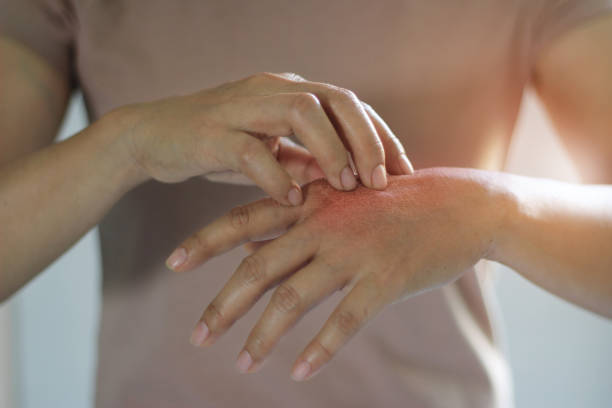Key Takeaway
· Red light therapy can significantly reduce psoriasis symptoms like redness, itching, and inflammation.
· Combining light therapy with an infrared sauna boosts skin healing and relaxation benefits.
· It’s a safe, non-invasive alternative to medication or topical treatments.
· Regular use improves circulation, immune response, and skin texture.
· Ideal for at-home wellness routines with the best infrared sauna for home.
What Is Red Light Therapy and How Does It Help Psoriasis?
Red light therapy uses low-level wavelengths of red or near-infrared light to stimulate the skin’s natural healing process. When absorbed by the skin, these wavelengths increase cellular energy, reduce inflammation, and encourage tissue repair—making it a promising treatment for psoriasis.
Initially developed by NASA for plant growth experiments in space, red light therapy has since shown remarkable benefits for human health, including skin rejuvenation, wound healing, and relief from chronic skin conditions like psoriasis.
Understanding Psoriasis: Symptoms and Causes
Psoriasis is an autoimmune disease that causes inflamed, scaly patches of skin, most often on the elbows, knees, and scalp. The condition occurs when the body’s immune system accelerates skin cell production, leading to redness, itching, and flaking.
While there’s currently no cure, consistent treatment can significantly reduce flare-ups. Traditional methods like creams and steroids often come with side effects, but red light therapy provides a gentler, long-term alternative that promotes natural healing.
Why Choose Red Light Therapy Over Traditional Treatments?
Unlike medications that suppress the immune system or irritate the skin, red light therapy supports your body’s healing processes. It helps calm inflammation, reduce plaque buildup, and stimulate new, healthy skin cell growth without the risk of thinning skin or drug dependency.
For individuals seeking a non-invasive solution that complements holistic wellness, red light therapy offers an elegant, science-backed approach to managing psoriasis naturally.
How Red Light Therapy Works for Psoriasis
When your skin is exposed to red light, the energy penetrates deep into the epidermal layers. The mitochondria—tiny energy producers within your cells—absorb this light, creating more adenosine triphosphate (ATP). This energy fuels repair and regeneration, helping to reduce redness, scaling, and itching associated with psoriasis.
Many users notice improved skin texture, less irritation, and a renewed sense of comfort after consistent sessions.
Red Light Therapy vs. Infrared Sauna Therapy: What’s the Difference?
Both therapies use heat and light, but they target the body differently. Red light therapy focuses on cellular rejuvenation, while infrared sauna sessions promote full-body detoxification, circulation, and relaxation.
When combined, these therapies complement each other beautifully. Using red light therapy inside the best infrared sauna for home setups enhances both skin healing and whole-body wellness—merging luxury self-care with therapeutic science.
How Often Should You Use Red Light Therapy for Psoriasis?
For visible results, most people benefit from 2–4 sessions per week during the first month, followed by regular maintenance. Each session typically lasts 10–20 minutes, depending on the intensity of the device or sauna setup. Consistency is key to achieving and maintaining skin clarity.
Can Red Light Therapy Be Combined with Infrared Sauna Use?
Yes. Integrating red light therapy into your home infrared sauna installation allows for deeper relaxation and faster skin healing.
The gentle heat of an infrared sauna indoor 2 person unit improves blood circulation and helps your body absorb the rejuvenating effects of red light more efficiently. This combination is not only practical—it turns your at-home wellness routine into a spa-grade experience.
What Wavelengths Are Best for Psoriasis?
Red light wavelengths between 630–660nm and near-infrared light around 850nm are most effective. These wavelengths penetrate the skin deeply enough to stimulate repair while remaining completely safe for regular use.
Studies have shown that both red and blue light can help reduce psoriasis lesions, but red light often delivers better comfort and overall skin tone improvement.
Final Thoughts
Red light therapy offers a soothing, natural, and science-backed solution for managing psoriasis. When paired with the best infrared sauna for home, it enhances the body’s healing potential while delivering deep relaxation and full-spectrum wellness benefits.
With regular use, this combination can help you maintain clearer skin, better circulation, and a balanced immune response—all from the comfort of your own home.
FAQs
What is the difference between red light therapy and infrared sauna therapy?
Red light therapy targets the skin’s surface and cellular repair, while an infrared sauna penetrates deeper to improve circulation and detoxification. When used together, they amplify each other’s health and wellness benefits.
How often should you use an infrared sauna for psoriasis?
Begin with 2–3 weekly sessions of 15–20 minutes. As your body adapts, you can increase frequency. Regular use supports detoxification and improves overall skin health.
Are home infrared saunas safe for health?
Yes, home infrared saunas are safe when used as directed. They operate at lower temperatures than traditional saunas, making them gentle on the skin and suitable for most users.
Which is better: red light therapy or infrared sauna for skin conditions?
Each offers unique benefits—red light therapy is ideal for cellular regeneration and inflammation reduction, while infrared sauna therapy promotes detoxification and stress relief. Together, they form a holistic approach to psoriasis care.
What are the best home saunas available today?
The best infrared sauna for home combines even heat distribution, low EMF technology, and full-spectrum lighting options that allow for both infrared and red-light therapy use.






